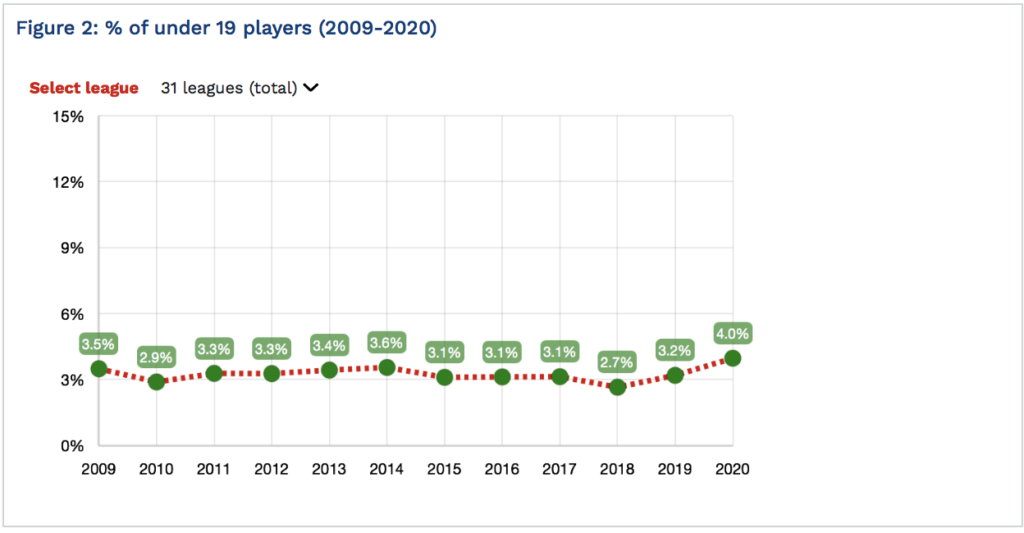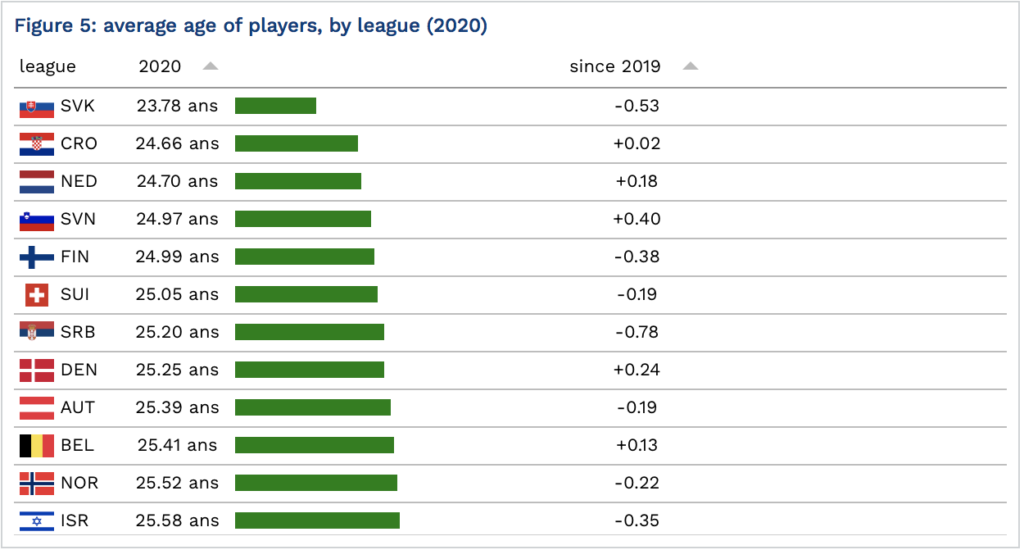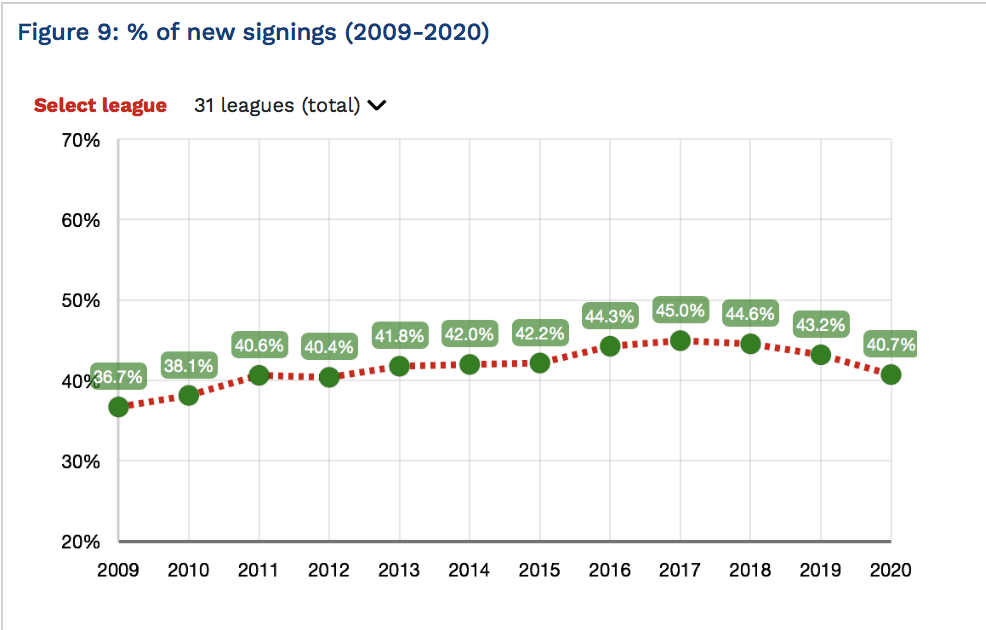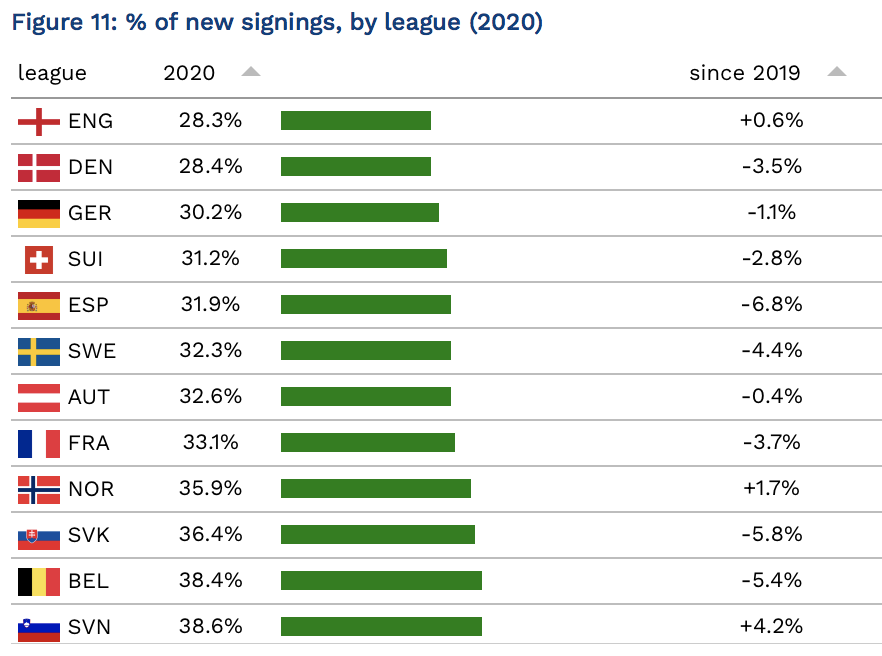November 12 – The annual player demographic census by the CIES Football Observatory shows the immediate impact the coronavirus pandemic has had in slowing down the movement of players and “strengthening” the gaps between the elite clubs and league and the rest.
The CIES looked at 12,088 players from the top male leagues in 31 European countries. Findings for 2020 show a 1.3% increase in players making their debuts for clubs compared to the 2018/19 season with the that increase being 1.9% in leagues outside the Big 5, and 0.2% within the Big 5
“ Following the pandemic, teams from the least successful leagues have given a first chance to three times more debutant players than clubs from the best championships, compared to only twice more during the previous decade,” say the report authors.
Similarly the opportunities for academy players to progress to their club’s first team has increased to 17.8% of the total playing ‘stock’. However, the increase is almost exclusive to clubs outside the Big 5 (+2.3%). “In the three top championship groups, the percentage of club-trained footballers has actually diminished (between -0.2% and -0.7%),” says the CIES.
Recruitment of new players has fallen across the board “to a level not seen since 2012 (40.7%). Confronted with significant revenue shortfalls, most clubs have reduced their activity on the transfer market.”
The same trend on international players is seen. ‘While the percentage of expatriates has grown steadily between 2009 and 2019, it has gone down after the pandemic (41.2%, -0.6%). In this case too, the biggest decrease was recorded for the minor championships (-2.4%), while a slight increase has been observed in the big-5 European leagues (+0.2%).”
The CIES concludes: “These findings show that the pandemic has exacerbated the inequalities between clubs throughout Europe. Smaller teams had to lower their ambitions even more than bigger ones. For many of the former, the immediate future presents itself more than ever as a fight for survival. In this extremely tense context, the clubs having built up solid training sectors will pull through better than the others. This holds true from both a sporting and a financial perspective.”
See the full report at https://football-observatory.com/IMG/sites/mr/mr59/en/
Contact the writer of this story at moc.l1745029666labto1745029666ofdlr1745029666owedi1745029666sni@n1745029666osloh1745029666cin.l1745029666uap1745029666







